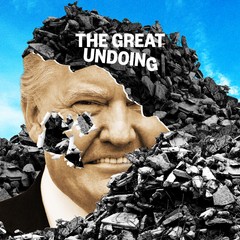U.S. President Donald Trump shakes hands with General Motors CEO Mary Barra in January 2017. Photo by Saul Loeb/AFP via Getty Images
A series that explores what parts of Trump’s legacy will be lasting, and what parts can be quickly undone by a new administration.
Advertisement
Advertisement
Advertisement
Advertisement
Advertisement
Advertisement
